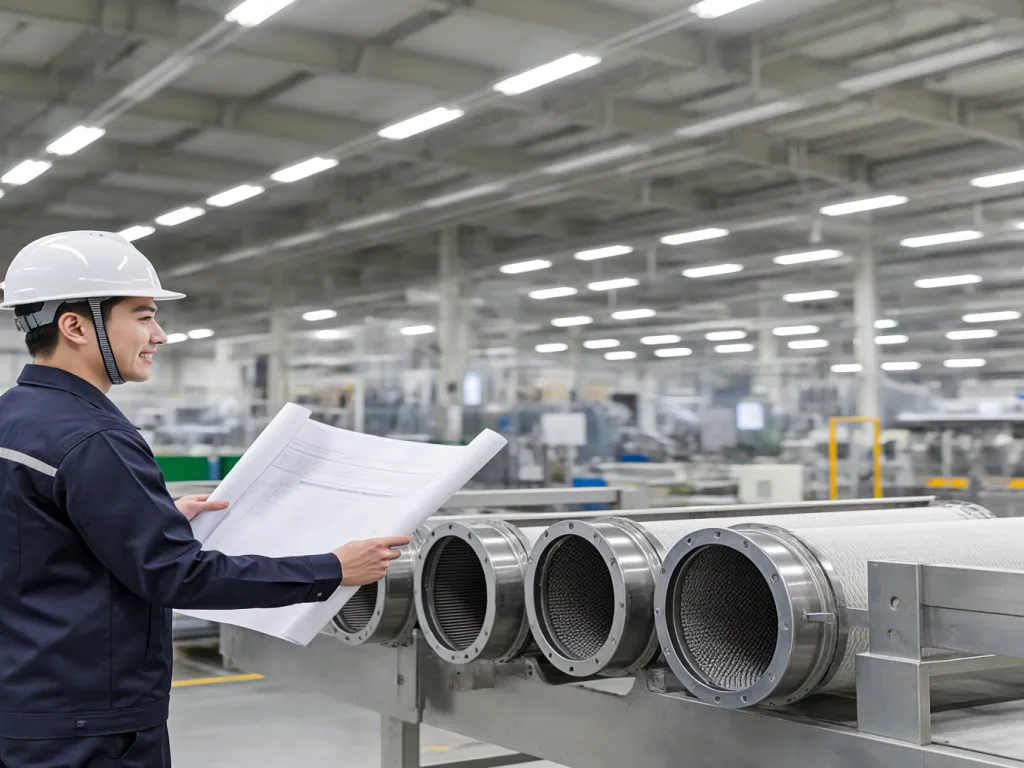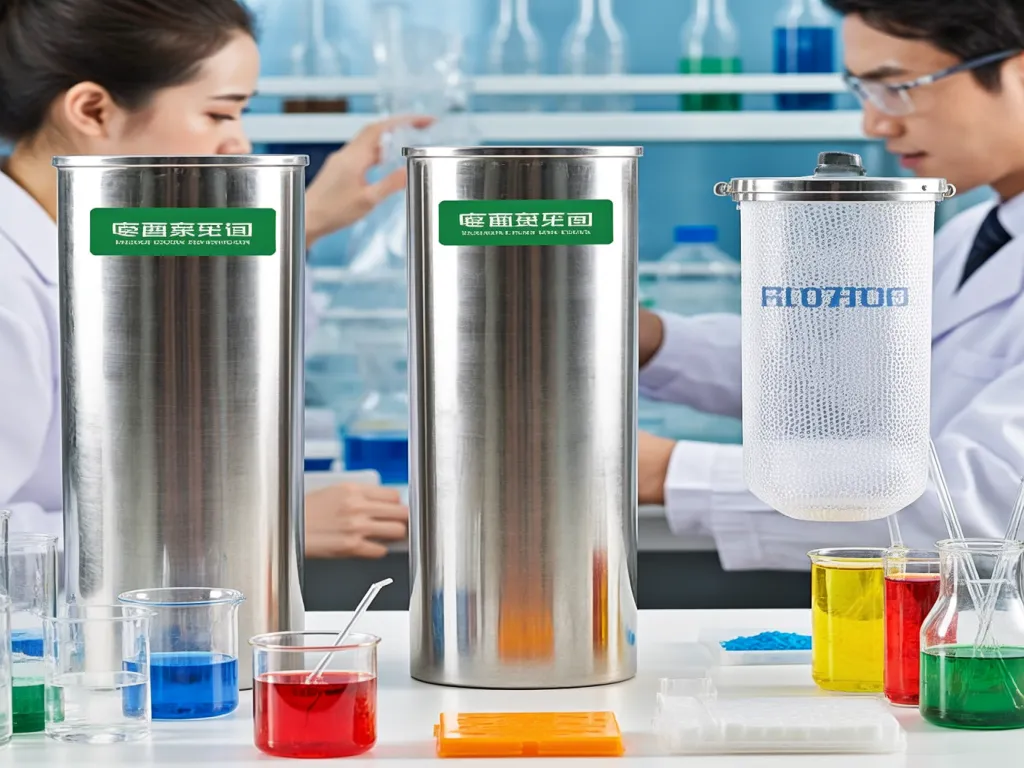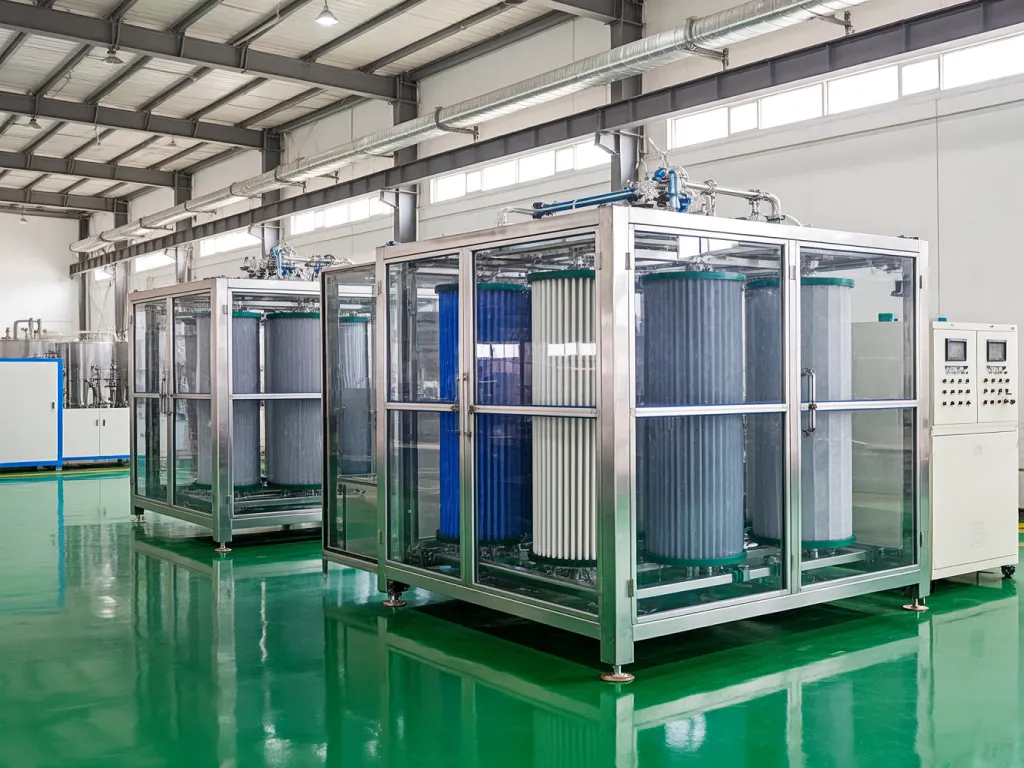Tailor-Made Filtration: Mastering Filter Bag Housing

In the intricate world of industrial filtration, one size certainly doesn’t fit all. Enter the realm of filter bag housing – a cornerstone of efficient industrial processes. Whether you’re grappling with high-volume processing demands or navigating the complexities of chemical compatibility, the right filter bag housing can make all the difference. But how do you ensure you’re selecting the perfect match for your unique needs? Let’s dive into the art and science of customizing filter bag housing for peak performance.

The Art of Size Customization: Exploring Selection Principles for Filter Bag Housing Sizes in Different Industrial Processes, Including Throughput, Space Constraints, and Future Scalability Considerations
First off, throughput is king.
When it comes to industrial filtration, the size of your filter bag housing isn’t just a matter of fitting it into a space—it’s a strategic decision that impacts efficiency, cost-effectiveness, and long-term adaptability. Let’s dive into how you can tailor the size of your filter bag housing to align perfectly with your industrial process requirements. First off, throughput is king. Imagine you’re running a high-volume production line where every second counts. Choosing a filter bag housing that’s too small is like trying to pour a gallon of water through a straw—it’s just not going to work efficiently. On the flip side, an oversized housing might seem like a safe bet, but it can lead to unnecessary energy consumption and higher initial costs. The key is to strike a balance. Start by calculating your average and peak throughput rates. Consider factors like flow rate, particle size distribution, and the viscosity of the fluid being filtered. A good rule of thumb? Opt for a housing size that can handle your peak throughput with a comfortable margin, but without going overboard.
Now, let’s talk about space constraints.
In many industrial settings, space is at a premium. You might have limited floor space, low ceilings, or awkward layouts to contend with. This is where customization truly shines. Instead of settling for a standard-size housing that doesn’t quite fit, work with a manufacturer who can tailor the dimensions to your specific space. Think outside the box—literally. Could a vertical housing design free up valuable floor space? Or perhaps a modular system that can be rearranged as needed? Don’t forget about accessibility for maintenance and filter changes, either. A compact design that’s hard to access is a recipe for frustration and downtime.
Finally, there’s the matter of future scalability.
Industries evolve, and so do your filtration needs. Maybe you’re planning to expand production, or perhaps you’re anticipating changes in the type of materials you’ll be filtering. Building in flexibility from the start can save you a headache down the road. Look for filter bag housing designs that allow for easy upgrades or modifications. Consider options like expandable housings or those with modular components that can be added or removed as needed. It’s also wise to future-proof by choosing materials and designs that can withstand a range of operating conditions, ensuring longevity and adaptability. In my experience, the most successful industrial filtration setups are those that are designed with the future in mind. I once worked with a client in the chemical processing industry who initially opted for a standard-size housing based on their current needs. Within two years, they had to completely overhaul their system to accommodate increased production and new product lines. It was a costly and time-consuming lesson in the importance of scalability.
So, how do you ensure you’re making the right size choice for your filter bag housing?
Start by conducting a thorough assessment of your current and anticipated needs. Engage with a reputable manufacturer who understands your industry and can offer tailored solutions. Don’t be afraid to ask questions, seek second opinions, and even request prototypes or simulations to test different configurations. Remember, the goal is to find a size that not only fits your space and handles your current throughput but also leaves room for growth and adaptation. It’s a delicate balancing act, but with careful planning and the right expertise, you can achieve a filtration system that’s as efficient as it is adaptable.

The Science of Material Selection: Analyzing the Pros and Cons of Various Materials (e.g., Stainless Steel, Carbon Steel, Plastic) for Filter Bag Housing
When it comes to selecting the right material for your filter bag housing, the stakes are high. The material you choose will directly impact the performance, durability, and chemical compatibility of your filtration system. So, how do you make the best decision? Let’s dive into the science of material selection, comparing stainless steel, carbon steel, and plastic, and considering factors like chemical compatibility and temperature resistance.
Stainless steel is often the go-to choice for filter bag housing, and for good reason. Its primary advantage lies in its exceptional resistance to corrosion. Whether you’re dealing with acidic, alkaline, or saline environments, stainless steel can hold its own, ensuring a long service life. But it’s not just about corrosion resistance. Stainless steel also boasts impressive temperature tolerance, making it suitable for high-temperature applications. However, this durability comes at a cost. Stainless steel filter bag housings tend to be more expensive than their counterparts, which might be a deciding factor for budget-conscious operations.
Now, let’s talk about carbon steel. Carbon steel is a popular choice for those seeking a balance between cost and performance. It’s stronger than many plastics and can withstand higher pressures, making it suitable for demanding industrial environments. However, carbon steel’s Achilles’ heel is its susceptibility to corrosion. Without proper coating or treatment, carbon steel can rust quickly, especially in moist or corrosive conditions. This means you’ll need to invest in regular maintenance and possibly protective coatings to ensure its longevity. But if you’re working with non-corrosive fluids and have a tight budget, carbon steel might be the way to go.
Finally, we have plastic filter bag housings. Plastics, such as polypropylene or PVC, offer a lightweight and cost-effective alternative. They’re resistant to many chemicals, making them suitable for a wide range of applications. For instance, when paired with polyester dust collector filter bags, they can provide a reliable filtration solution in environments where corrosion is a concern, as they don’t rust like metals. However, plastics have their limitations. They generally can’t withstand the same high temperatures or pressures as metals, which might restrict their use in certain industrial settings. Additionally, while plastics are durable, they can be more prone to cracking or breaking under extreme stress or impact.
So, how do you decide? It all comes down to understanding your specific needs. Consider the chemical compatibility of the fluids you’ll be filtering. Are they acidic, alkaline, or corrosive? Next, think about the temperature range your system will operate in. Will you need a material that can handle extreme heat or cold? And don’t forget about pressure. Will your filter bag housing need to withstand high pressures?
By carefully evaluating these factors, you can narrow down your options and choose the material that best fits your application. Remember, the right material can make all the difference in the performance and longevity of your filter bag housing. So, take the time to do your research and make an informed decision.
Stainless Steel: The Corrosion-Resistant Champion
Stainless steel stands out for its remarkable resistance to corrosion, making it a top pick for environments where chemical exposure is a concern. Its ability to withstand both acidic and alkaline conditions ensures that your filter bag housing remains intact and functional over time. Moreover, stainless steel’s high-temperature tolerance allows it to perform reliably in hot processes, such as those found in chemical manufacturing or food processing. While the initial cost may be higher, the long-term savings in maintenance and replacement costs make stainless steel a wise investment.
Carbon Steel: The Cost-Effective Contender
Carbon steel offers a compelling blend of strength and affordability. It’s capable of handling higher pressures than many plastics, making it suitable for heavy-duty industrial applications. However, its vulnerability to corrosion necessitates protective measures, such as coatings or regular maintenance, to prevent rusting. For operations dealing with non-corrosive fluids and seeking a budget-friendly option, carbon steel provides a viable solution, provided you’re willing to invest in its upkeep.
Plastic: The Lightweight and Versatile Option
Plastic filter bag housings, crafted from materials like polypropylene or PVC, offer a lightweight and economical choice. They’re inherently resistant to many chemicals, reducing the risk of corrosion and extending their service life. Plastics are also easier to install and handle due to their lower weight. When used in conjunction with fiberglass filter bags, they can provide a reliable and cost-effective filtration solution. Yet, their limitations in temperature and pressure resistance mean they’re best suited for less demanding environments. If your application involves moderate temperatures and pressures, plastic could be the perfect fit.

Optimizing Filtration Efficiency: Comparing Performance and Strategies for Filter Bag Housing
When it comes to industrial filtration, the efficiency of your filter bag housing can make or break your operational success. Whether you’re processing large volumes of liquids or gases, understanding how different filtration efficiencies impact performance is crucial. But what exactly determines filtration efficiency, and how can you optimize it for your specific industrial process? Let’s dive in. First, it’s essential to recognize that filtration efficiency isn’t a one-size-fits-all metric. It varies based on the type of contaminants you’re dealing with, the flow rate of your process, and the desired purity level of your output. For instance, a filter bag housing designed for high-volume processing in a chemical plant will have different efficiency requirements compared to one used in a food and beverage application where product purity is paramount. Now, let’s talk about filter bag materials. The choice of material for your filter bags is perhaps the most significant factor influencing filtration efficiency. Polyester, polypropylene, and nylon are common materials, each with its own set of advantages. Polyester, for example, offers excellent chemical resistance and durability, making it suitable for a wide range of applications. For more insights on polyester filter bags and their efficiency, you can explore our range of wholesale polyester dust collector filter bags. Polypropylene, on the other hand, is known for its low moisture absorption and resistance to many chemicals, making it ideal for use in humid or corrosive environments. Nylon, with its high tensile strength and abrasion resistance, is often chosen for heavy-duty applications. But how do these materials impact filtration efficiency? Well, the pore size and structure of the filter bag material play a critical role. A finer pore size will trap smaller particles, increasing filtration efficiency but potentially reducing flow rate. Conversely, a coarser pore size will allow for higher flow rates but may let smaller particles through, reducing efficiency. It’s a delicate balance that requires careful consideration based on your specific process requirements. Beyond material selection, the structural design of your filter bag housing also influences filtration efficiency. The housing should be designed to ensure even distribution of flow across all filter bags, preventing bypass and ensuring maximum contact between the fluid and the filter media. This can be achieved through careful placement of inlet and outlet ports, as well as the use of baffles or other flow distribution devices. Additionally, the ease of filter bag replacement and maintenance is another crucial aspect of structural design. A housing that allows for quick and easy filter bag changes can minimize downtime and ensure consistent filtration performance. After all, even the most efficient filter bag won’t do you much good if it’s difficult to replace when it reaches the end of its service life. So, how can you put all this into practice? Start by conducting a thorough analysis of your industrial process. Identify the types and sizes of contaminants you need to remove, the desired purity level of your output, and the flow rate of your process. Then, use this information to guide your selection of filter bag materials and housing design. Don’t be afraid to consult with experts or conduct pilot tests to validate your choices. For high-efficiency options, consider our factory wholesale polyester dust collector filter bags. Remember, optimizing filtration efficiency is an ongoing process. As your industrial process evolves, so too should your filtration system. Regularly monitor your filtration performance, and be prepared to make adjustments as needed to ensure you’re always getting the most out of your filter bag housing.
Material Selection: The Foundation of Filtration Efficiency
Choosing the right filter bag material is like laying the foundation for a sturdy building. It sets the stage for everything that comes after. As mentioned earlier, polyester, polypropylene, and nylon are popular choices, each with its own strengths. But did you know that there are also specialized materials available for specific applications? For instance, if you’re dealing with highly corrosive chemicals, you might opt for a PTFE (polytetrafluoroethylene) filter bag, which offers exceptional chemical resistance. Or, if you’re in the pharmaceutical industry where product purity is non-negotiable, you might choose a glass fiber filter bag known for its high filtration efficiency and low extractables. The key is to match the material properties with your process requirements. Consider factors like chemical compatibility, temperature resistance, and mechanical strength. And don’t forget about cost-effectiveness. While a high-performance material might offer superior filtration, it might also come with a hefty price tag. Balance performance with budget to find the sweet spot for your application.
Structural Design: Ensuring Optimal Flow and Efficiency
The structural design of your filter bag housing is equally important as material selection. A well-designed housing will ensure that the fluid flows evenly across all filter bags, maximizing contact time and filtration efficiency. Think of it like a well-organized traffic system. If the roads are clear and the traffic lights are synchronized, vehicles can move smoothly and efficiently. But if there are bottlenecks or poorly designed intersections, traffic jams occur, and efficiency drops. Similarly, in your filter bag housing, you want to avoid any ‘bottlenecks’ or areas where the fluid can bypass the filter bags. This might involve strategically placing inlet and outlet ports, using baffles to direct flow, or even incorporating multiple filter chambers for staged filtration. Another aspect of structural design is ease of maintenance. A housing that’s difficult to open or requires specialized tools for filter bag replacement can lead to increased downtime and higher maintenance costs. Look for designs that offer quick-access doors, tool-less filter bag changes, and clear visual indicators for when replacement is needed.
Navigating the maze of filter bag housing options can be daunting, but armed with the insights from this guide, you’re now equipped to make informed decisions. Remember, the key to unlocking optimal filtration efficiency lies in the perfect marriage of size, material, and design. By tailoring your filter bag housing to your industrial process, you’re not just enhancing performance; you’re future-proofing your operations. Ready to transform your filtration setup? Share this guide with your team, explore our tailored solutions, and embark on a journey to unparalleled industrial efficiency. The world of custom filtration awaits – are you ready to seize it?

